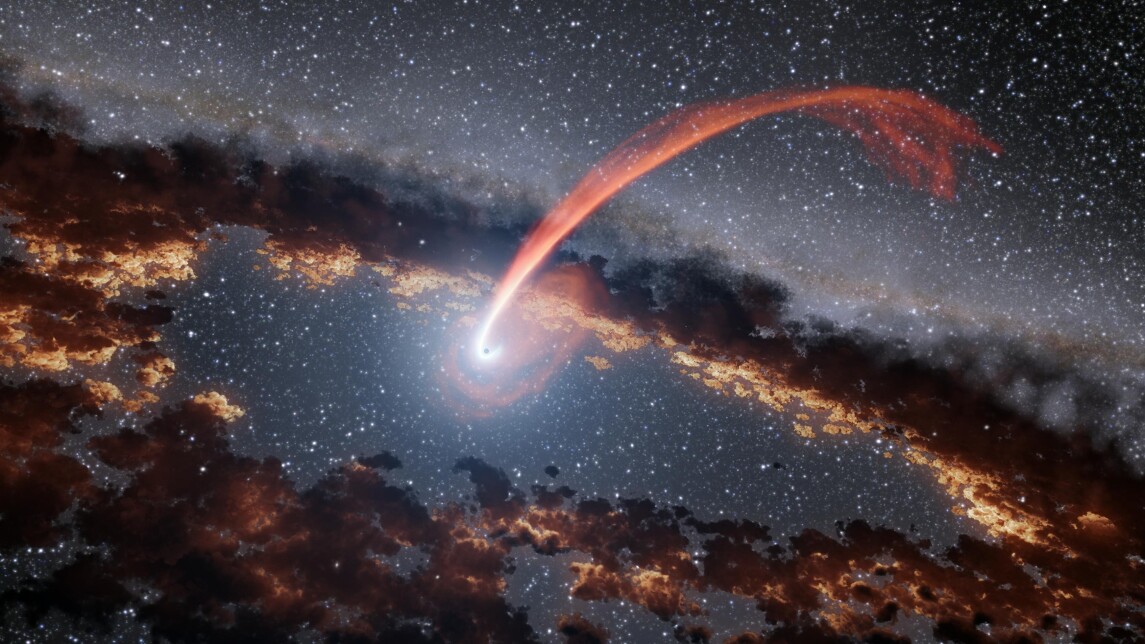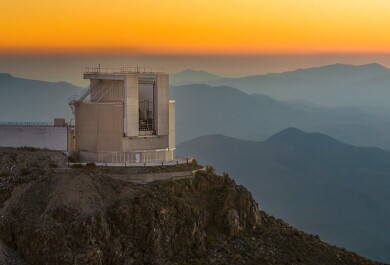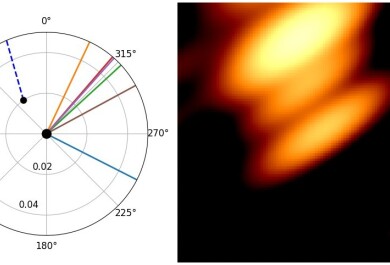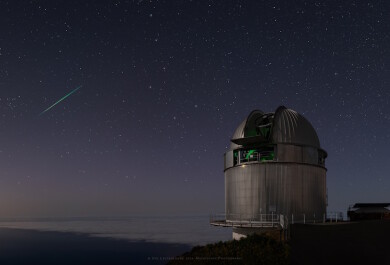We know that in the centres of the majority of galaxies lies a supermassive black hole. New observations of certain galaxies reveal that these black holes may be consuming stars at a higher rate than previously known. The energy produced by the destruction of the star can be revealed in the infrared, as heat from cosmic dust warmed by the explosion.
When a star draws too close to a black hole, it can experience such strong forces from the intense gravity that it is pulled apart. Some of the gas that once made up the star will be flung from the black hole, with the rest swirling inwards to be consumed. This process, called a tidal disruption event, produces intense radiation, which we can observe. However, some of the supermassive black holes at the centres of galaxies are concealed behind dust, and thus this radiation will be obscured.
– Recent observations of certain dusty galaxies have revealed some of these obscured stellar disruptions. The light emitted as the star is swallowed by the black hole can heat the ambient dust nearby, which can then be observed in the infrared. The discovery of these events in these galaxies was unexpected, and indicates that an entire population of previously unknown tidal disruption events may be hiding within them. This is likely due to previous galaxy mergers throwing stars from their paths to encounter the supermassive black hole that will destroy them. Through discovering more of these events and investigating their observed properties, their true rate can be determined, doctoral candidate Thomas Reynolds says.
Stars much more massive than our sun can typically end their lives through a violent explosion, known as a supernova. In this process, the dense core of the star collapses in on itself, triggering a shockwave that destroys the star. Studying these phenomena reveals the nature of the star in its final moments and its nearby environment. It was during the search for supernovae in dusty galaxies that the obscured tidal disruption events were discovered.
– It was an amazing fortuitous discovery. We went looking for supernovae close to the centres of these galaxies, and did find them, as described in the thesis. However, we also found this completely unknown population of really bright transients that seem to be connected to these mergers of galaxies which are forming lots of young stars. I am really excited to continue investigating them and connecting them to the other tidal disruption events that are now being frequently discovered in other cosmic environments, says Reynolds.
***
MSc Thomas Reynolds defends his dissertation in Astronomy entitled ”The nature and rates of failed, rare, or obscured core-collapse supernovae and nuclear transients"
The audience can participate in the defence by remote access.
Opponent: Associate Professor Suvi Gezari, Space Telescope Science Institute, USA.
Custos: Professor Seppo Mattila, University of Turku
Illustration: NASA/JPL-Caltech




